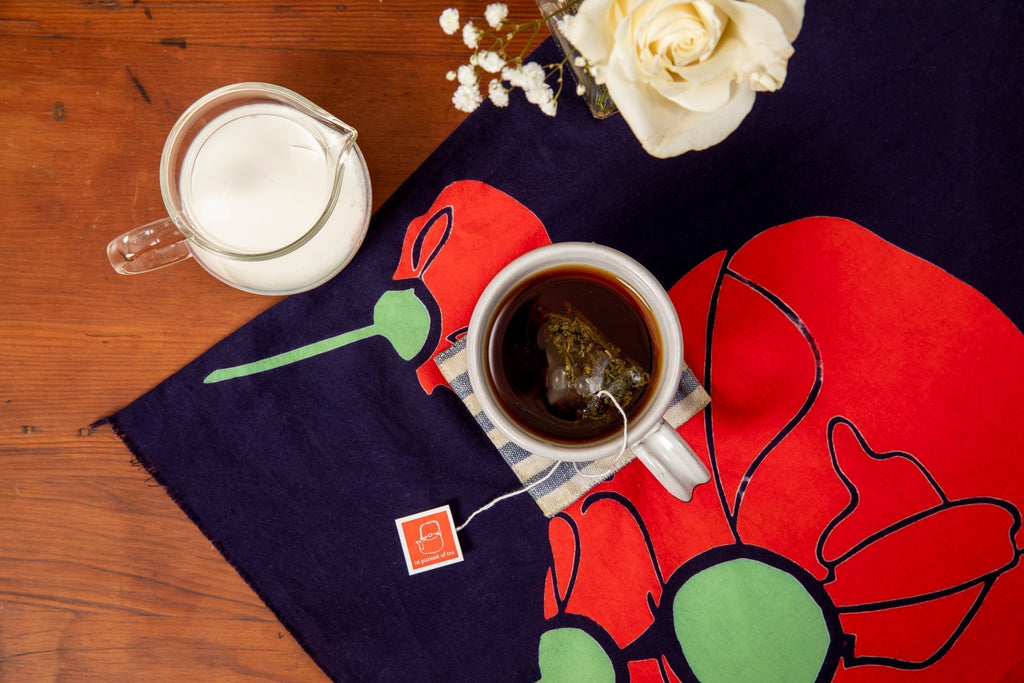What's the Difference Between Ceylon, Assam and Darjeeling? A Guide to Orthodox Tea

Black tea production dates back to 17th century China, and since then the well oxidized style has become the world's most popular kind of tea. Out of the five largest tea-producing countries (China, India, Kenya, Sri Lanka and Turkey), four of them focus almost exclusively on black tea for drinkers across the globe. That's a lot of black tea!
If you're new to looseleaf, it's easy for the names and production regions to blend together. What sets a Ceylon apart from an Assam? Why all the buzz about Darjeeling? All of these teas are made roughly the same way, but regional variation in climate and production style make for distinct differences that are easy to perceive in the cup. Here's a starter to guide to navigating the world of black tea.
Orthodox tea processing
The orthodox tea production method was developed by British planters in colonial India during the 18th century. "Orthodox" refers to strict adherence to traditional techniques: first tea leaves are withered, rolled, then laid out to oxidize and develop deep, fruity flavors. After a final firing process, the leaves are sorted into different grades based on leaf size; these have names like Flowery Orange Pekoe or Broken Orange Pekoe.

Wherever European colonization went, orthodox tea followed. Many tea estates in India, Sri Lanka, Africa and the Americas started making tea using this orthodox method. Since the 1950s, though, a newer, more mechanized system of production called crush-tear-curl (CTC) has become far more popular. CTC teas rely on automation in the fields and factory to make a lot more tea in a lot less time with fewer workers and less skill. While orthodox teas begin with hand-picked leaves, CTC teas can be mechanically harvested. Instead of the labor-intensive, multi-step process of orthodox production, CTC machines chew up tea leaves into tiny particles that oxidize quickly and evenly.
These teas brew fast, dark, and consistent, but they lack the dimension and complexity of whole-leaf orthodox styles. A CTC from India will taste a little different from one made in Sri Lanka, but they're far more similar than the orthodox versions of teas from those countries. There are advantages to these teas, but with single-origin looseleaf black teas, there's no question that orthodox methods yields a tastier cup. Orthodox production also benefits small farms and their workers, because they can be sold for a much higher price than CTC.
Since orthodox processing is fairly standardized, orthodox teas from different regions become bold expressions of regional climate and terroir. These teas offer a delicious insight into local flavors, and everyone at the IPOT office has their own favorite. Here are the main regions to look out for.

Ceylon black tea
Portuguese and English colonizers applied the name Ceylon to the island of Sri Lanka beginning in the 16th century. Any tea made in Sri Lanka can be considered Ceylon, but the name is usually synonymous with orthodox and CTC black teas. Sri Lanka's geography is diverse and tea gardens appear all over the country, from low-lying coastal areas to misty mountains. That means the taste can vary from place to place, but generally speaking, Ceylon teas are brisk, bold and bright with a sunny warmth that's balanced by an astringent backbone. They have a classic "black tea" flavor and are often taken with milk, as is the local custom.
We source a unique Ceylon tea from the New Vithanakande Estate in southern Sri Lanka. This variety is the top grade produced by the factory only a few times a year, when they can accumulate enough tiny buds and small leaves that are rich with flavors reminiscent of brioche toast and sun-dried tomato. We're confident it's unlike any other Ceylon tea that you've tried!

Assam black tea
The Assam plains of West Bengal are the largest tea-growing region not just in India, but across the globe. This sun-drenched stretch of humid tropical land is one of the places where the tea plant is native. Indigenous peoples in Assam have long used the Camellia sinensis var. assamica subspecies as a cooking ingredient, beverage and medicine. This large-leaf variety is ideal for growing in the plains, and almost all Assam tea is made with it as opposed to the var. sinensis variety favored in most of China.
Ample sunlight and a year-round growing season afford Assam teas dark woody flavors and strong maltiness that commands attention. Raisin and dark plum notes are common along with a thick, rich body. These traits have made Assam an essential component of breakfast tea blends like English and Irish Breakfast. While the vast majority of Assam teas are CTC, a few gardens are committed to quality orthodox production. Our Assam, Kachibari Village hails from a small organic farm where elephants often roam. The tea is bold, yet balanced, with a spicy gingerbread and molasses character. We also source an Assam Golden Tip that's packed with golden buds, resulting in a smooth and luxurious cup that reminds us of toast with buckwheat honey. If teabags are more your speed, this Assam English Breakfast will reward you with a convenient and complex cup.

Darjeeling and Himalayan black tea
Darjeeling is near Assam in the state of West Bengal. But where Assam teas grow in sunny lowlands, Darjeeling tea fields sit on steep mountainous slopes and are draped in morning mist. British colonizers established estates in Darjeeling to make a black tea more akin to the delicate fruity styles made in China. The small-leaf var. sinensis plant is dominant here, although var. assamica plants also appear in some fields.
High elevation and ample cloud cover mean less sunlight and cooler temperatures in Darjeeling, so tea plants grow slowly, developing complex and concentrated flavors. We have a guide to the region with more details, but in brief, Darjeeling teas are the most nuanced and brightest of our orthodox black tea offerings. The first flush produced in early spring is processed into a unique style that looks almost like a white or green tea. We source small batches every year with distinctive herbal and alpine flavors. The second and autumnal flushes are more like typical black teas, but are rich with notes of fruit, spice and wintergreen.
Darjeeling is part of the Himalayan mountain range, and other Himalayan tea gardens outside of West Bengal also make orthodox teas similar to Darjeeling's. These include one-of-a-kind teas from the Jun Chiyabari Estate in Nepal and the Bermiok Estate in Sikkim. Since these gardens aren't part of Darjeeling proper they tend to be more experimental in the types of teas they make, with stylistic inspirations from China, Taiwan and Japan.
Which black tea is right for me?
If you're after a bold, powerful cup to wake you up in the morning, Assam is the tea for you. For a more balanced classic black tea, try a quality Ceylon. And if you want more complexity in your cup, Darjeeling teas may be just the thing. There's a black tea for every mood and season, and the best way to find your favorite is to try them all!
